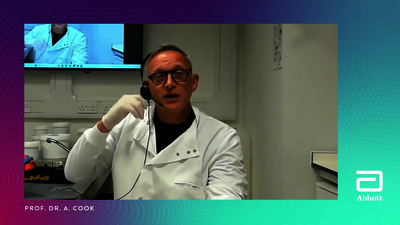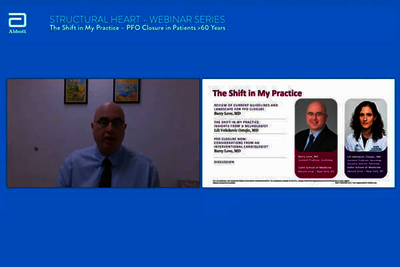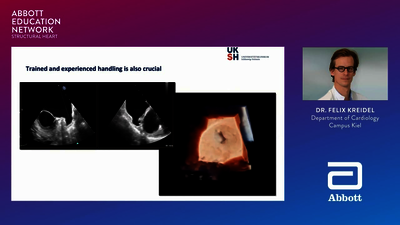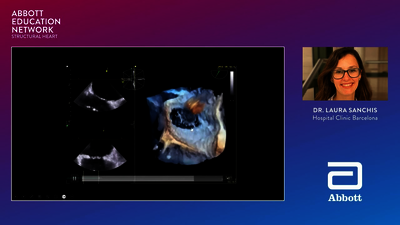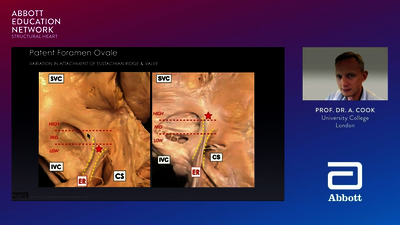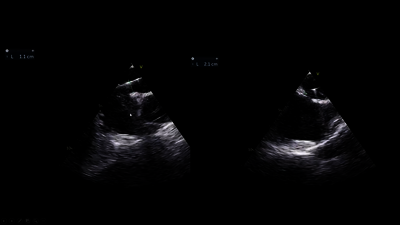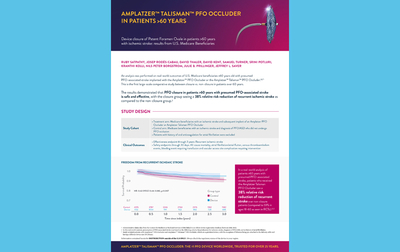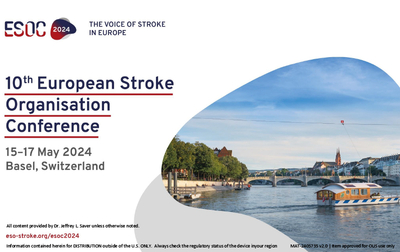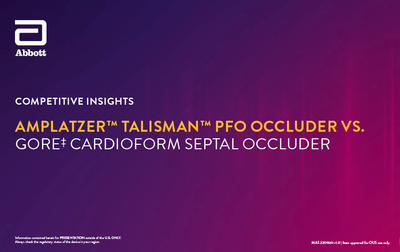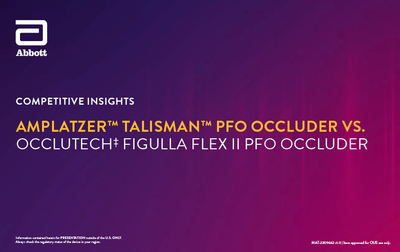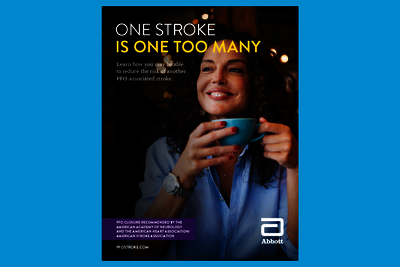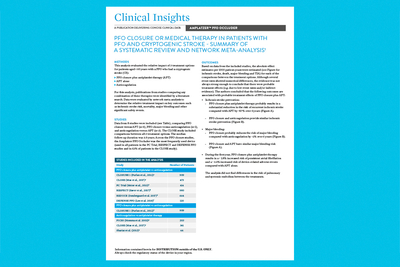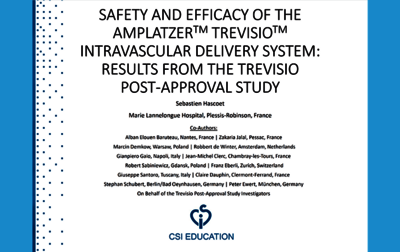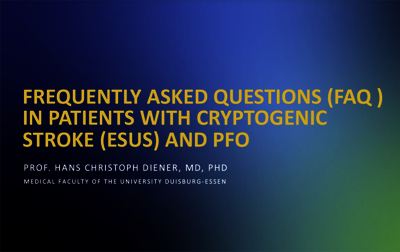Patent foramen ovale (PFO) is an embryonic defect associated with an increased risk of ischemic stroke.1 PFO closure combined with long-term antiplatelet therapy is recommended to prevent recurrent stroke in selected patients.2
SWITCH TO THE interventional VIEW For more information specific to interventional cardiology regarding PFO closure
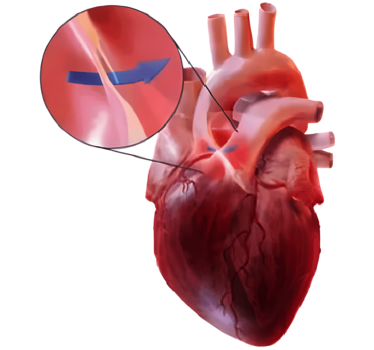
PATENT FORAMEN OVALE (PFO)
PFO is defined as an opening in the septum between the atria that acts as a conduit for emboli from the deep veins of the pelvis or legs to the brain.
The foramen ovale is vital for fetal circulation, when blood returning to the right atrium is shunted through to the left atrium. Post birth, the foramen ovale closes spontaneously in most people, but PFO occurs in about 25% of the population.3
THE FORAMEN OVALE REMAINS OPEN POST BIRTH
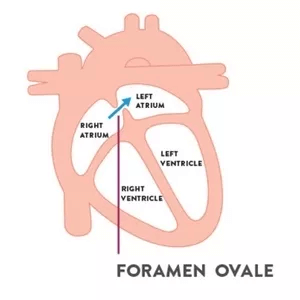
BEFORE BIRTH
Open foramen ovale
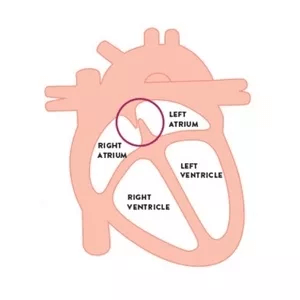
POST BIRTH
Natural closure of the
foramen ovale
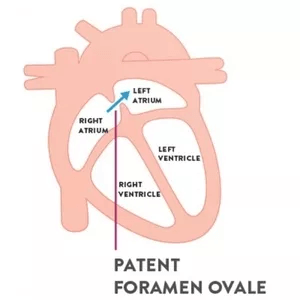
POST BIRTH
Foramen ovale remains
open, creating a PFO
Most people with a PFO are asymptomatic. But an atrial septal aneurysm (ASA) may open the PFO with every heartbeat, thereby increasing the possibility for a thrombus to pass from the venous to arterial system, which can cause a stroke.4
PFO CLOSURE: BEHIND THE NUMBERS
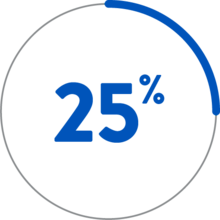
Ischemic strokes
are of unknown
cause5
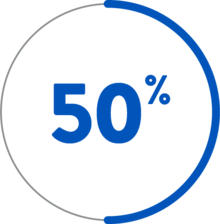
Of patients with
an ischemic stroke
of unknown cause
have a PFO4
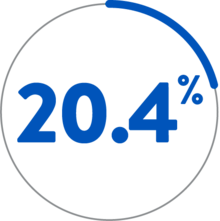
Patients with a PFO and
a prior ischemic stroke of
unknown cause are at risk of
recurrent stroke6 - a 20.4%
rate of recurrent embolic
event at 2 years7
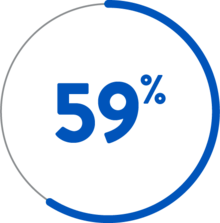
Recurrent stroke
risk reduction
after PFO
closure2

PFO-ASSOCIATED STROKE
A group of physicians with extensive knowledge of stroke and PFO have brought attention to the fact that new data indicate a need to update the classification schemes of the causative mechanism in stroke. Given the superiority of PFO closure over medical management in selected patients, new nomenclature should be used when looking at causation—and that is “PFO-associated stroke.”8 Learn more about the rationale behind changing the causation classification by clicking on the link below.
TV
TV
HUB
- Kent DM, Thaler DE. Is patent foramen ovale a modifi able risk factor for stroke recurrence? Stroke. 2010;41(10 Suppl 1):S26–30. doi.org/10.1161/STROKEAHA.110.595140.
- Messé SR, Gronseth GS, Kent DM, et al. Practice advisory update summary: patent foramen ovale and secondary stroke prevention. Neurology. 2020;94(20):876–885. doi.org/10.1212/WNL.0000000000009443.
- Homma S, Sacco RL. Patent foramen ovale and stroke. Circulation. 2005;112(7):1063–1072. doi.org/10.1161/CIRCULATIONAHA.104.524371.
- Mojadidi MK, Zaman MO, Elgendy IY, et al. Cryptogenic stroke and patent foramen ovale. J Am Coll Cardiol. 2018;71(9):1035–1043. doi.org/10.1016/j.jacc.2017.12.059.
- Saver JL. Clinical practice. Cryptogenic stroke. N Engl J Med. 2016;374(21):2065–2074. doi.org/10.1056/NEJMcp1503946.
- Kernan WN, Ovbiagele B, Black HR, et al. AHA/ASA guidelines for the prevention of stroke in patients with stroke and transient ischemic attack. Stroke. 2014;45(7):2160–2236. doi.org/10.1161/STR.0000000000000024.
- Homma S, Sacco RL, Di Tullio MR, et al. E ect of medical treatment in stroke patients with patent foramen ovale: patent foramen ovale in cryptogenic stroke study. Circulation. 2002;105(22):2625–2631. doi.org/10.1161/01.CIR.0000017498.88393.44.
- Elgendy AY, Saver JL, Amin Z, et al. Proposal for updated nomenclature and classifi cation of potential causative mechanism in patent foramen ovale-associated stroke. JAMA Neurol. 2020;77(7):878–886. doi.org/10.1001/jamaneurol.2020.0458.
- Pristipino C, Sievert H, D’Ascenzo F, et al. European position paper on the management of patients with patent foramen ovale. EuroIntervention.2019;14(13):1389–1402. doi.org/10.4244/EIJ-D-18-00622.
- Diener H-C, Sacco RL, Easton JD, et al. Dabigatran for prevention of stroke after embolic stroke of undetermined source. N Engl J Med. 2019;380(20):1906–1917. doi.org/10.1056/NEJMoa1813959.

